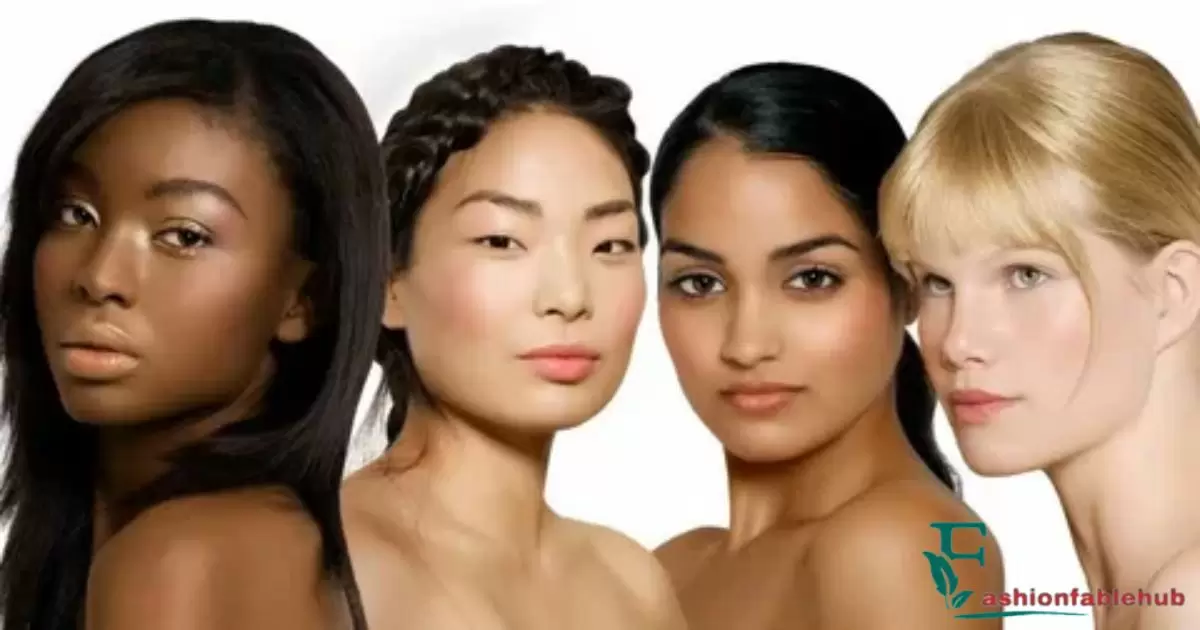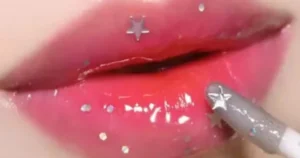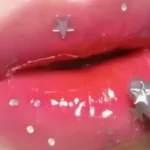Hair is a complex biological structure that Ethnicity Has the Thickest Hair varies greatly across different ethnic groups. Understanding the anatomy, composition, and characteristics of hair can provide insights into why certain ethnicities have thicker or coarser hair textures. In this comprehensive blog post, we’ll delve into the intricacies of hair, exploring the factors that influence thickness, strength, and overall hair quality.
The Root: The Living Part of the Hair
The root of the hair is the living part, embedded in the scalp’s dermis layer. It contains specialized cells called melanocytes that produce melanin, the pigment responsible for hair color. The root is nourished by blood vessels, providing essential nutrients for hair growth and health.
The Hair Shaft and Its Different Layers
The visible part of the hair is called the hair shaft, composed of three main layers:
- Medulla: The innermost layer, often absent in finer hair types.
- Cortex: The middle layer, containing the hair’s pigment and providing strength and resilience.
- Cuticle: The outermost layer, consisting of overlapping scales that protect the inner structures.
The Diversity of Hair Types
Hair types can be classified based on various characteristics, including:
Implantation, Density, Thickness, Length, and Growth
- Implantation: The angle at which hair emerges from the scalp (perpendicular, oblique, or parallel).
- Density: The number of hair strands per unit area on the scalp.
- Thickness: The diameter of individual hair strands.
- Length: The maximum length hair can grow before shedding.
- Growth rate: The rate at which hair grows, typically around 0.3-0.5 mm per day.
Hair Strength
Hair strength is determined by its composition, structure, and the integrity of the cortex and cuticle layers. Stronger hair is more resistant to breakage and damage.
Hair Composition
Hair is primarily composed of proteins, lipids, and trace elements:
Keratin, Hair Elasticity
Keratin is the structural protein that forms the hair’s filaments, providing elasticity and strength. The higher the keratin content, the thicker and coarser the hair.
Hair is Capable of Absorbing 30% of Its Weight in Water
Hair can absorb up to 30% of its weight in water, affecting its elasticity, strength, and manageability.
Melanin: The Pigment Responsible for Hair Color
Melanin is the pigment produced by melanocytes in the hair root, determining hair color. Higher melanin levels result in darker hair shades.
Lipids: Hair Rigidity and Waterproofness
Lipids, such as apolar (non-polar) and polar lipids, contribute to hair rigidity, waterproofness, and overall manageability.
Bibliography
For further reading and reference, here are some authoritative sources on hair anatomy and diversity:
- “Hair Anatomy and Biology” by A.G. Messenger and J. Sinclair (2006)
- “Ethnic Hair: An Overview” by A.J. McMichael (2007)
- “Hair Structure and Function” by R.M. Trueb (2005)
The Structure and Anatomy of Hair
Hair is a complex biological structure that varies greatly across different ethnic groups. Understanding its anatomy and composition can provide insights into why certain ethnicities have thicker or coarser hair textures.
The root of the hair is the living part, embedded in the scalp’s dermis layer. It contains specialised cells called melanocytes that produce melanin, the pigment responsible for hair colour. The root is nourished by blood vessels, providing essential nutrients for hair growth and health.
The visible part of the hair is called the hair shaft, composed of three main layers:
- Medulla: The innermost layer, often absent in finer hair types.
- Cortex: The middle layer, containing the hair’s pigment and providing strength and resilience.
- Cuticle: The outermost layer, consisting of overlapping scales that protect the inner structures.
The structure and composition of these layers play a crucial role in determining hair thickness, strength, and overall quality.
Characteristics of Hair
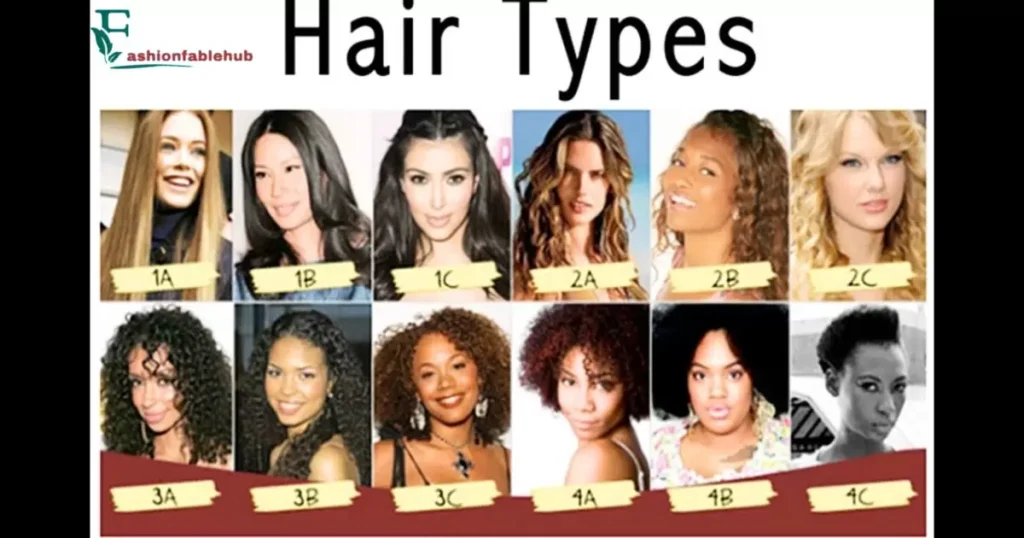
Hair types can be classified based on various characteristics, including:
Implantation, Density, Thickness, Length, and Growth
- Implantation: The angle at which hair emerges from the scalp (perpendicular, oblique, or parallel).
- Density: The number of hair strands per unit area on the scalp.
- Thickness: The diameter of individual hair strands.
- Length: The maximum length hair can grow before shedding.
- Growth rate: The rate at which hair grows, typically around 0.3-0.5 mm per day.
Hair Strength
Hair strength is determined by its composition, structure, and the integrity of the cortex and cuticle layers. Stronger hair is more resistant to breakage and damage.
Hair Growth Cycle
Hair undergoes a cyclical growth pattern:
- Anagen (Growth Phase): The active growth phase, lasting 2-7 years.
- Catagen (Transition Phase): A short, transitional phase when hair stops growing.
- Telogen (Resting Phase): The resting phase, lasting 2-4 months before the hair sheds.
This cycle varies across individuals and ethnicities, affecting hair length and density.
Comparison of Hair Types
Hair types can be broadly categorised based on their appearance and texture:
- Straight Hair: Exhibits minimal curliness or waviness.
- Wavy Hair: Has a slight curve or bend along the hair shaft.
- Curly Hair: Forms ringlets or coils along the hair shaft.
- Coily Hair: Tightly coiled or kinky hair strands.
These types are influenced by factors such as genetics, ethnicity, and hair composition.
Differences Between Curly, Wavy, and Straight Hair
Curly and coily hair types tend to be thicker and more resistant to stretching compared to straight or wavy hair. This is due to the higher curvature of the hair shaft, which requires more structural integrity to maintain its shape.
Additionally, curly and coily hair often has a higher density of hair strands per unit area on the scalp, contributing to its overall thickness and volume.
Factors influencing hair thickness including genetics and nutrition
Genetics play a significant role in determining hair thickness, density, and texture. Certain ethnicities are predisposed to producing thicker, coarser hair strands due to their genetic heritage and cultural practices.
Proper nutrition is also crucial for maintaining healthy hair growth and thickness. Deficiencies in vitamins, minerals, and proteins can lead to thinning, breakage, and overall hair quality deterioration.
Ethnic Hair Types and Characteristics
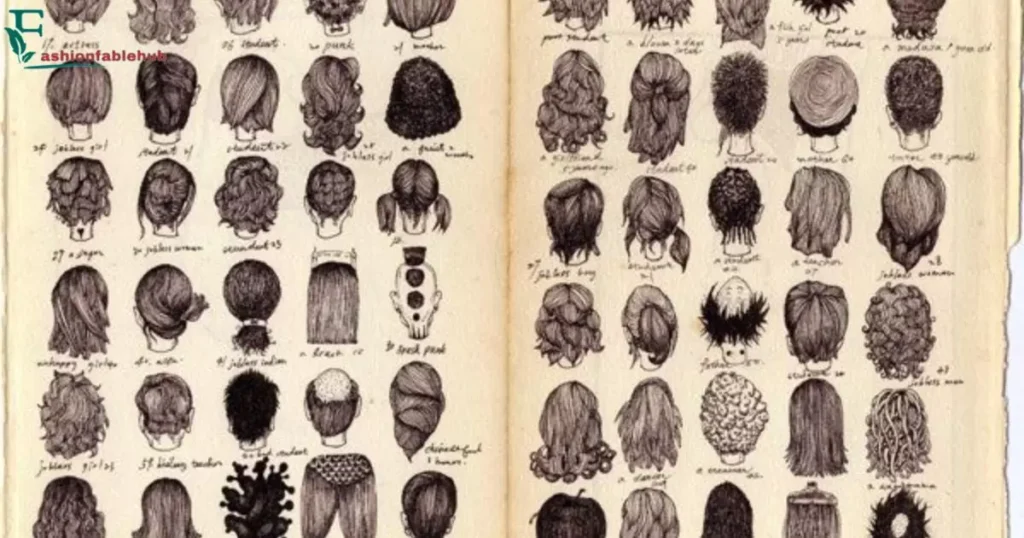
Different ethnic groups exhibit distinct hair characteristics due to their genetic and environmental factors:
- African Hair: Generally coarser, thicker, and more tightly coiled, with a higher density of hair strands. This is due to the flattened or elliptical shape of the hair shaft and a higher keratin content.
- Asian Hair: Typically straight, coarse, and thick, with a higher density of hair strands. Asian hair shafts are often round or slightly oval in shape.
- Caucasian Hair: Can range from fine and thin to coarse and thick, with varying degrees of waviness or curliness. Caucasian hair shafts are generally round or oval in shape.
These ethnic hair types are often categorised into “ethno-capillary profiles,” which consider factors such as hair density, texture, and growth patterns.
Comparison of hair thickness between African, Asian, and Caucasian ethnicities
Studies have shown that African hair tends to be the thickest and coarsest among ethnic groups, followed by Asian hair, and then Caucasian hair. Here’s a comparative breakdown:
- African Hair: Typically has the largest hair strand diameter, ranging from 60 to 100 micrometres (µm) on average.
- Asian Hair: Hair strand diameter is slightly smaller than African hair, ranging from 50 to 90 µm on average.
- Caucasian Hair: Generally has the finest hair strands, with diameters ranging from 40 to 80 µm on average.
It’s important to note that these are generalisations, and individual variations exist within each ethnic group.
Hair maintenance techniques for thick hair
Maintaining thick hair can be challenging, as it is prone to tangling, dryness, and frizz. Here are some effective techniques for managing and caring for thick hair:
- Use a wide-tooth comb or detangling brush: Gently work through tangles from the bottom up to minimize breakage.
- Condition regularly: Thick hair can be prone to dryness, so use a moisturizing conditioner to keep it hydrated and manageable.
- Apply hair masks or deep conditioning treatments: Occasional deep conditioning can help nourish and strengthen thick hair strands.
- Avoid over-brushing: Excessive brushing can cause breakage and frizz, especially when hair is dry.
- Use a leave-in conditioner or serum: These products can help tame frizz and add shine to thick hair.
- Air dry or use a diffuser attachment: Excessive heat from blow-drying can damage thick hair strands.
- Trim regularly: Regular trims can help prevent split ends and keep thick hair looking healthy.
7 Hair Maintenance Techniques for Thick Hair
- Use a Wide-Tooth Comb or Detangling Brush: Gently work through tangles from the bottom up to minimize breakage.
- Condition Regularly: Thick hair can be prone to dryness, so use a moisturizing conditioner to keep it hydrated and manageable.
- Apply Hair Masks or Deep Conditioning Treatments: Occasional deep conditioning can help nourish and strengthen thick hair strands.
- Avoid Over-Brushing: Excessive brushing can cause breakage and frizz, especially when hair is dry.
- Use a Leave-In Conditioner or Serum: These products can help tame frizz and add shine to thick hair.
- Air Dry or Use a Diffuser Attachment: Excessive heat from blow-drying can damage thick hair strands.
- Trim Regularly: Regular trims can help prevent split ends and keep thick hair looking healthy.
Products recommended for maintaining and styling thick hair
When it comes to thick hair, choosing the right products can make a significant difference in manageability and overall hair health. Here are some recommended product types:
- Moisturizing Shampoos and Conditioners: Look for products with hydrating ingredients like shea butter, coconut oil, or argan oil to nourish and soften thick hair strands.
- Hair Masks and Deep Conditioners: These intensive treatments can help repair damage, add moisture, and improve the overall condition of thick hair.
- Leave-In Conditioners and Serums: These products can help detangle, tame frizz, and add shine to thick hair without weighing it down.
- Thickening or Volumizing Products: For those with naturally thick hair, these products can provide additional body and fullness.
- Heat Protectants: If you use hot styling tools, a heat protectant spray or serum can help prevent damage to thick hair strands.
- Lightweight Styling Creams or Gels: Look for products that provide hold and control without making thick hair feel stiff or crunchy.
When selecting products, consider your hair’s specific needs, such as dryness, frizz, or lack of shine, and choose formulas designed for thick or coarse hair types.
Recommended hairstyle for thick hair
Thick hair can be challenging to style, but there are many flattering hairstyles that can showcase its volume and texture. Here are some recommended hairstyles for thick hair:
- Layers: Adding layers can help remove bulk and weight from thick hair, creating movement and shape.
- Blunt Cuts: A blunt cut, either shoulder-length or long, can create a sleek and polished look for thick hair.
- Textured Lob (Long Bob): A textured lob can add dimension and movement to thick hair while keeping it manageable.
- Waves or Curls: Thick hair can often hold waves or curls well, creating a bouncy and voluminous look.
- Updo or Braided Styles: Updos, like a messy bun or braided styles, can help control and tame thick hair while showcasing its texture.
- Long and Layered: For those who prefer longer styles, adding layers can help reduce bulk and create movement in thick hair.
- Fringe or Bangs: A fringe or bangs can help frame the face and add style to thick hair.
Remember, the key to styling thick hair is to work with its natural texture and find hairstyles that accentuate its volume and density.
How often should I wash thick hair?
The frequency of washing thick hair can vary based on individual preferences, hair type, and lifestyle factors. Here are some general guidelines:
- Normal to Dry Thick Hair: Washing every 2-3 days is typically recommended to avoid stripping natural oils from the hair and scalp.
- Oily Thick Hair: Those with oily hair or scalp may need to wash more frequently, every 1-2 days, to prevent buildup and keep hair looking fresh.
- Active Lifestyle or Frequent Sweating: If you exercise regularly or have a physically active lifestyle, washing thick hair more often may be necessary to remove sweat and oil buildup.
It’s important to listen to your hair and scalp’s needs and adjust your washing routine accordingly. Using a gentle, sulfate-free shampoo and following up with a nourishing conditioner can help maintain the health and manageability of thick hair.
Health Concerns Related to Thick Hair Including Scalp Conditions and Hair Loss
While thick hair is often considered desirable, it’s important to be aware of potential health concerns that can affect the scalp and hair quality. Here are some common issues related to thick hair:
- Scalp Conditions: Thick hair can make it challenging to maintain a healthy scalp, as the density of hair strands can trap sweat, oils, and bacteria. This can lead to conditions like seborrheic dermatitis, folliculitis, or scalp acne.
- Hair Loss: Excessive shedding or thinning can occur due to various factors, including hormonal imbalances, nutritional deficiencies, stress, or underlying medical conditions. Thick hair may mask initial signs of hair loss, making it important to monitor for excessive shedding or thinning over time.
- Tangling and Breakage: Thick hair is more prone to tangling, knots, and breakage, especially if not properly detangled and maintained. This can lead to split ends, frizz, and overall damage to the hair strands.
- Styling Challenges: The weight and density of thick hair can make it challenging to style and maintain certain hairstyles, potentially leading to tension or strain on the hair and scalp.
To address these concerns, it’s essential to practice proper hair care, including regular scalp massages, gentle detangling techniques, and using appropriate products for thick hair. Additionally, seeking professional advice from a dermatologist or trichologist can help identify and address any underlying scalp or hair issues.
In conclusion, while thick hair is often envied for its volume and texture, it requires special care and attention to maintain its health and manageability. By understanding the unique characteristics of thick hair and implementing the right hair care routines and products, you can embrace and celebrate the beauty of your luscious locks.
Conclusion
Hair thickness and overall hair quality are heavily influenced by a person’s ethnic background and genetic heritage. This comprehensive guide has explored the intricacies of hair anatomy, composition, and the characteristics that contribute to thick, coarse hair textures.
It’s evident that African hair stands out as the thickest and most coarse among ethnic groups, followed closely by Asian hair, while Caucasian hair generally exhibits a finer texture. This difference can be attributed to factors such as hair strand diameter, density, curvature, and the structural composition of the hair shaft.
While thick hair is often desired for its voluminous appearance, it requires special care and attention to maintain its health and manageability. Proper hair care techniques, such as gentle detangling, regular conditioning, and use of appropriate products, are crucial for preventing damage, dryness, and breakage.
Furthermore, it’s important to be aware of potential health concerns related to thick hair, including scalp conditions, hair loss, and styling challenges. Seeking professional advice and addressing any underlying issues can help ensure the overall well-being of your hair and scalp.
Embracing the unique qualities of thick hair and celebrating its beauty is essential. By understanding the science behind hair thickness and implementing the right hair care routines, individuals of all ethnic backgrounds can unlock the full potential of their luscious locks.
